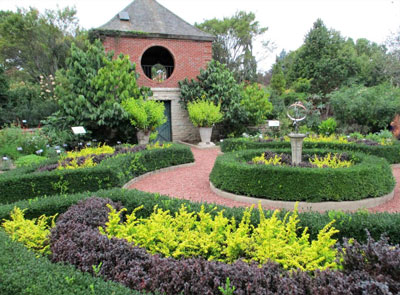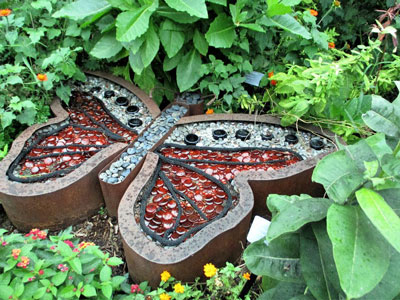Green Bay Botanical Garden — A sense of place…

This time of year, when you think Green Bay, football comes to mind. But despite the adrenaline rush that accompanies thoughts of Wisconsin’s storied Green Bay Packers, 13-time National Football League Champions, Lambeau Field is not the only place in Wisconsin’s oldest city where green and gold are memory makers.

At Green Bay Botanical Garden, a must-see destination for garden lovers, nature lovers, and families, fall arrives with Golden Fleece goldenrod, Lemon Queen sunflower, Orange Cosmic cosmos, and the sun-gold tones of French marigold, to name a few of the fall blooming beauties. As the days shorten and the temperature cools, trees, too, celebrate the season with colorful foliage.


During my recent visit to the garden, I learned that more than 62,000 plants representing 3,800 species and cultivars that thrive in the Upper Midwest grow here in 33 specialty gardens. The 47-acre, award-winning garden opened in 1996. It occupies the site of an historic Green Bay apple orchard. In fact, one of the theme gardens, Larsen Orchard Remnant, features apple trees from the former orchard. Records show that during WWII, apples harvested here were used to make applesauce for soldiers. Today, bulbs, shade-tolerant perennials, and annuals provide a comely understory to the old trees.


Folks can get their first glimpse of the historic trees from the Wellhouse, a camera-friendly structure that occupies Schneider Terrace, near the Visitor Center. The Wellhouse also overlooks a combination parterre/herb garden, and the Color and Foliage Garden where trees, shrubs, grasses, perennials, and vines provide an ongoing display of yellow, maroon, chartreuse, gray, and blue-green foliage.



Nearby, old-fashioned self-seeding annuals, herbs, and veggies surround a quaint cottage in a mid-western interpretation of how groundskeepers would have lived and gardened on an English country estate. In true cottage garden tradition, the walkways are cobbled together from re-purposed stone, brick, and other “rummaged” materials.


Activities and education are the focus at the Children’s Garden where a tree house, maze, slide, koi pond, butterfly garden, and sensory garden keep youngsters occupied. Kid pleasers include the “wetting zoo,” an area that invites kids to water animal-shaped topiaries, and the nearby Hobbit House, a rest station built to resemble a hobbit hideaway. Besides being fun to look at, the whimsical structure provides lessons in conservation. Not only is it built into the hillside which minimizes its heating and cooling needs, but the green roof lessens storm water runoff and provides habitat for garden critters.

At the Shade Garden, Green Bay Botanical Garden returns to its roots. Here, in this tranquil oasis, thousands of hostas and other shade-tolerant perennials fringe a babbling spring that meanders toward ruins of a stone springhouse. Before the days of refrigeration, the springhouse would have been used to cool produce.

Other specialty gardens at Green Bay Botanical Garden include Magnolia Grove, Vietnam Veteran Garden, All America Selections Trial Garden, Hosta Display Garden, and Daylily Display Garden.
For more information about Green Bay Botanical Garden go to: www.gbbg.org
